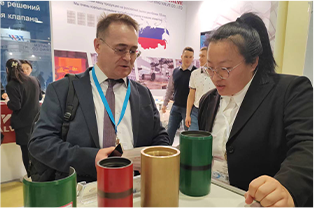- Afrikaans
- Albanian
- Amharic
- Arabic
- Armenian
- Azerbaijani
- Basque
- Belarusian
- Bengali
- Bosnian
- Bulgarian
- Catalan
- Cebuano
- Corsican
- Croatian
- Czech
- Danish
- Dutch
- English
- Esperanto
- Estonian
- Finnish
- French
- Frisian
- Galician
- Georgian
- German
- Greek
- Gujarati
- Haitian Creole
- hausa
- hawaiian
- Hebrew
- Hindi
- Miao
- Hungarian
- Icelandic
- igbo
- Indonesian
- irish
- Italian
- Japanese
- Javanese
- Kannada
- kazakh
- Khmer
- Rwandese
- Korean
- Kurdish
- Kyrgyz
- Lao
- Latin
- Latvian
- Lithuanian
- Luxembourgish
- Macedonian
- Malgashi
- Malay
- Malayalam
- Maltese
- Maori
- Marathi
- Mongolian
- Myanmar
- Nepali
- Norwegian
- Norwegian
- Occitan
- Pashto
- Persian
- Polish
- Portuguese
- Punjabi
- Romanian
- Russian
- Samoan
- Scottish Gaelic
- Serbian
- Sesotho
- Shona
- Sindhi
- Sinhala
- Slovak
- Slovenian
- Somali
- Spanish
- Sundanese
- Swahili
- Swedish
- Tagalog
- Tajik
- Tamil
- Tatar
- Telugu
- Thai
- Turkish
- Turkmen
- Ukrainian
- Urdu
- Uighur
- Uzbek
- Vietnamese
- Welsh
- Bantu
- Yiddish
- Yoruba
- Zulu
casing pup joint
Understanding Casing Pup Joints An Essential Component in Oil and Gas Operations
In the oil and gas industry, the integrity and performance of the drilling operation heavily rely on the components used in the casing system. One such critical element is the casing pup joint. Casing pup joints play a vital role in ensuring the stability and safety of oil and gas wells. This article will delve into what casing pup joints are, their composition, their purpose, and their advantages in drilling operations.
What is a Casing Pup Joint?
A casing pup joint is a short length of pipe typically used in the completion of oil or gas wells. It is essentially a casing pipe but shorter than standard lengths, usually measuring from a few feet to several feet long. Casing pup joints are designed to connect different sections of casing pipe or to adjust the total length of the casing string to meet specific well requirements.
These joints are available in various sizes and thicknesses, tailored to fit the specifications of the well. They can be manufactured from different materials, but steel is the most common due to its high strength and resistance to various stresses encountered downhole.
The Purpose of Casing Pup Joints
The primary purpose of casing pup joints is to help achieve the correct length of the casing string in a wellbore. When drilling operations require highly precise measurements, casing pup joints allow engineers to make necessary adjustments without the need for full-length casing pipes. This flexibility is particularly essential in scenarios where the wellbore might undergo unexpected changes in diameter or depth.
Additionally, casing pup joints assist in the structural integrity of the well. They provide pressure containment and prevent the collapse of the wellbore, ensuring that the well operates safely and efficiently. Casing pup joints also facilitate easy installation and removal of the casing string, which is crucial during the drilling and completion process.
casing pup joint

Advantages of Casing Pup Joints
1. Customization and Flexibility Casing pup joints can be manufactured to suit specific needs, allowing for customized lengths and diameters. This flexibility ensures that they can cater to various well conditions and configurations.
2. Cost-Effective Solution Using casing pup joints can be a more economical choice compared to using full-length casing pipes for adjustments. They reduce material waste and lower transportation costs, as shorter lengths of pipe can be easier to handle and ship.
3. Enhanced Well Integrity By ensuring the proper length and fit of the casing string, pup joints play a crucial role in maintaining the structural integrity of the well. This is particularly important in high-pressure environments where failure can lead to catastrophic results.
4. Simplicity of Installation Casing pup joints are relatively easy to install, making them a convenient option during the construction phase of a well. Their lightweight nature allows for quicker assembly, thereby reducing operational downtime.
5. Versatile Applications Beyond typical drilling operations, casing pup joints can be used in various applications, including cementing processes, workover operations, or when modifying existing casings.
Conclusion
Casing pup joints represent an important piece of technology in the oil and gas industry, helping to ensure safe and effective drilling operations. Their ability to provide customized solutions and maintain the structural integrity of wells makes them invaluable in a sector where precision is critical. As drilling techniques continue to evolve and improve, the role of casing pup joints will remain essential in meeting the demands of modern oil and gas exploration and production. With the continuous push toward efficiency and safety, understanding and utilizing all components of the casing system, including pup joints, becomes increasingly imperative for professionals in the industry.
-
Tubing Pup Joints: Essential Components for Oil and Gas OperationsNewsJul.10,2025
-
Pup Joints: Essential Components for Reliable Drilling OperationsNewsJul.10,2025
-
Pipe Couplings: Connecting Your World EfficientlyNewsJul.10,2025
-
Mastering Oilfield Operations with Quality Tubing and CasingNewsJul.10,2025
-
High-Quality Casing Couplings for Every NeedNewsJul.10,2025
-
Boost Your Drilling Efficiency with Premium Crossover Tools & Seating NipplesNewsJul.10,2025







